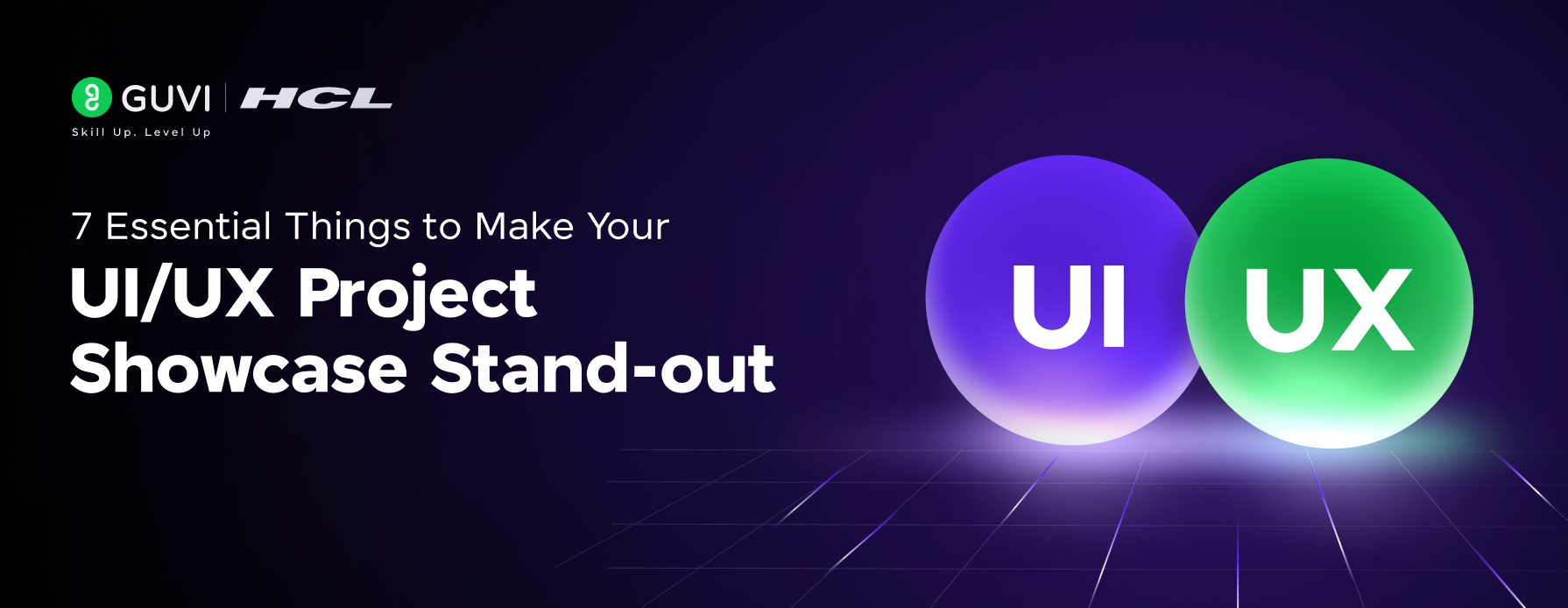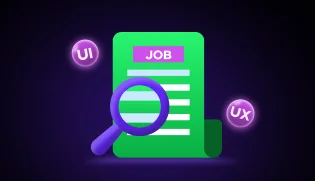
Voice User Interface (VUI) Design: Crafting Conversational Experiences
Apr 23, 2025 5 Min Read 4459 Views
(Last Updated)
Voice User Interface (VUI) Design is all about making our gadgets like websites, apps, and web apps talk and listen to us. Have you ever wished you could just speak to your phone or computer and have it understand and help you? That’s what VUI does.
Why is this amazing for your website or app? Well, imagine being able to use an app without even touching your phone. You could be cooking, driving, or just relaxing on your couch. VUI makes this possible. It’s all about making technology easier and more fun to use for everyone.
In this blog, we’re going to talk about the six fundamental properties that make VUI work. We’re also going to look at the tasks you can do with VUI.
Table of contents
- Why Does Your Website, Web App, or App Need a VUI?
- I) Increasing User Engagement Through Natural Interactions
- II) Enhancing User Accessibility and Convenience
- III) Meeting Modern User Expectations and Tech Trends
- Six Fundamental Properties Of VUI Design
- Voice-first Design
- Natural Conversation
- Personalization
- Tone of Voice
- Context of Use
- Sense of Trust
- Opportunities in VUI Design
- A) Conversational Commerce
- B) Virtual Assistants
- C) In-Car Experiences
- D) Healthcare and Accessibility
- E) Entertainment and Gaming
- Overcoming Challenges in VUI Design
- Addressing the Complexity of Natural Language Processing (NLP)
- Ensuring User Privacy and Data Security
- Handling Diverse User Demographics and Languages
- Balancing between AI Automation and Human Touch
- Conclusion
- FAQs
- What is Voice User Interface (VUI) Design?
- Why is VUI Design important in modern technology?
- How do you make a good VUI design?
Why Does Your Website, Web App, or App Need a VUI?
The integration of Voice User Interfaces (VUI) into websites, web applications, and mobile apps is transforming the way users interact with technology. Here are the reasons why incorporating a VUI can be a game-changer for your digital platform:
As we proceed to the next phase, make sure you understand the fundamentals of UI/UX, which includes heuristic analysis, journey maps, testing, etc. If you want to explore more about it, join GUVI’s UI/UX Course with Placement Assistance. You’ll also learn about the tools used in UI/UX which are AdobeXD, Illustrator, Photoshop, Figma, and many more. Build some amazing real-time projects to get hands-on experience.
Also, if you want to explore Figma through a Self-paced course, try GUVI’s Figma certification course.
I) Increasing User Engagement Through Natural Interactions
Unlike typing or clicking, speaking is a natural form of communication for humans. By integrating VUI, you allow users to interact with your digital platform in a way that feels more human and less robotic. Speaking can be faster and more convenient than typing, especially for lengthy queries or instructions. This ease of interaction can encourage users to engage more frequently and deeply with your platform.
Read More: Top 10 UI Design Patterns: Creating Intuitive and Engaging User Experiences
II) Enhancing User Accessibility and Convenience
VUI opens up your digital platform to a wider audience, including those who may have difficulty using traditional input methods due to disabilities or other limitations. With VUI, users can interact with your app or website while their hands are busy, like when cooking or driving. This multitasking capability greatly enhances the convenience of your platform.
III) Meeting Modern User Expectations and Tech Trends
As voice-activated devices like smart speakers and voice assistants become more common, people are getting used to interacting with technology through voice. Incorporating VUI into your digital platform can significantly enhance user engagement, accessibility, and overall satisfaction, keeping you in line with current technological trends and user expectations.
Now that we’ve explored why incorporating a Voice User Interface (VUI) into your digital platforms is beneficial, let’s learn the core elements that make up effective VUI design. Understanding these six fundamental properties will help you create a VUI that’s not only functional but also user-friendly and engaging.

Also Explore: 8 Stunning UI/UX Design Examples To Get You Inspired
Six Fundamental Properties Of VUI Design
Exploring the six fundamental properties of Voice User Interface (VUI) design offers an understanding of the essentials of creating effective and user-friendly voice interactions. Let’s break down each of these properties:
1. Voice-first Design
The voice-first design prioritizes voice as the primary mode of interaction. This approach is important because it focuses on creating an intuitive and natural user experience that uses the unique strengths of voice communication. Unlike screen-based interfaces that rely on visual cues and text, voice-first design requires a focus on auditory interaction.
This means considering factors like speech recognition, natural language processing, and audio feedback, rather than visual layout and typography.
2. Natural Conversation
Creating dialogues that feel natural and intuitive is key to VUI. This involves using conversational language and anticipating user responses to maintain a fluid interaction. Ensuring linguistic fluency in VUI design is important. It’s not just about understanding spoken words but also interpreting user intent, managing ambiguities, and providing contextually relevant responses.
3. Personalization
Personalization in VUI means adapting interactions based on the user’s preferences, history, and behavior. This makes the experience more relevant and engaging. Using data and Artificial Intelligence allows for dynamic personalization. By analyzing user data, VUIs can learn and adapt to individual user patterns, preferences, and needs over time.

Also Read: User Flow in UX Design: 11 Important Steps to Look After
4. Tone of Voice
The tone of voice in VUI should align with your audience and brand identity. The right tone can significantly enhance user experience. The tone used in VUI can affect how users perceive your brand and interact with your interface. A well-chosen tone can build a positive user experience and strengthen brand loyalty.
5. Context of Use
VUI should be designed considering the various environments and situations in which it will be used. This includes understanding the user’s physical environment, the device being used, and the user’s current activity. Contextual understanding allows VUI to provide more accurate and relevant responses. It involves recognizing the user’s situation and adapting the interaction accordingly.
6. Sense of Trust
Trust is paramount in VUI design. Integrating robust security measures and ensuring user data privacy are essential to gain and maintain user trust. Transparency in how data is used and how decisions are made by the VUI fosters trust. Users should feel in control of their interactions and data.
These six properties form the cornerstone of effective VUI design, ensuring that voice interfaces are not only functional but also enjoyable and trustworthy for users.

Also Read: UI/UX Designer Job Description and Roles & Responsibilities
Having explored the six fundamental properties of VUI design, we now turn our attention to the exciting opportunities that VUI presents. Let’s learn the potential and possibilities that lie in VUI design.
Opportunities in VUI Design
The opportunities in Voice User Interface (VUI) design are diverse and expanding across various sectors. Let’s explore these opportunities in more detail:
A) Conversational Commerce
VUI can transform the shopping experience by making it more interactive and convenient. Customers can search for products, place orders, and get support through simple voice commands. Many e-commerce giants have integrated voice search and shopping functionalities. For example, some platforms allow users to reorder products or track their deliveries using voice assistants.
Explore: Key Role of UI/UX in E-Commerce Success in 2024
B) Virtual Assistants
Virtual assistants, powered by AI and VUI, are increasingly becoming a part of daily routines, assisting with tasks like scheduling, information retrieval, and smart home control. Examples include assistants that manage smart homes, offer personalized news updates, or assist in managing calendars and emails efficiently.
C) In-Car Experiences
Modern cars are increasingly equipped with VUI systems, allowing drivers to control navigation, entertainment, and vehicle settings without taking their hands off the wheel. VUI enhances safety by reducing the need for manual controls and visual distractions. It also adds convenience by enabling drivers to focus on the road while managing other tasks verbally.
Explore: 10 Real-World UI/UX Applications: The Magic of UI/UX
D) Healthcare and Accessibility
In healthcare, VUI can make services more accessible, especially for those with physical or visual impairments. It can facilitate tasks like appointment scheduling, medication reminders, and accessing health information. VUI can improve patient engagement and compliance, provide support for elderly care, and even assist healthcare providers in accessing patient data hands-free.
E) Entertainment and Gaming
In entertainment, VUI can create more immersive experiences. For example, voice commands can control streaming services or interact with smart TVs. Certain games use VUI for interactive storytelling or command inputs, enhancing the gaming experience. Similarly, some streaming platforms allow voice search for finding shows or movies.

Also Read: Why Should You Become a UI/UX Designer: Top 10 Reasons
Having explored the exciting opportunities in VUI design, it’s important to also address the hurdles one might face in this field. Let’s shift our focus now to overcoming challenges in VUI design, ensuring that our journey in voice interface innovation is not only creative but also practical and user-friendly.
Overcoming Challenges in VUI Design
Overcoming challenges in Voice User Interface (VUI) design is important for creating effective, secure, and user-friendly voice interactions. Here are key strategies for addressing these challenges:
1. Addressing the Complexity of Natural Language Processing (NLP)
Implementing sophisticated NLP algorithms that can understand, interpret, and respond to a variety of speech patterns, accents, and dialects. This includes continuous updates and learning from user interactions. Enhancing the VUI’s ability to grasp the context of user requests, can significantly improve response accuracy and relevance.
Read More About Basics of NLP: A Beginner’s Guide to Natural Language Processing
2. Ensuring User Privacy and Data Security
Implementing strong encryption and secure data handling practices to protect user data from unauthorized access. Clearly communicating to users how their data is being used and offering them control over their data. This includes easy-to-understand privacy settings and opt-out options for data collection.
3. Handling Diverse User Demographics and Languages
Designing VUI systems that are inclusive of diverse user groups, considering factors like age, culture, language, and accents. This might involve extensive testing with varied user groups to ensure accessibility and usability. Developing VUIs that support multiple languages and regional dialects, allowing for broader accessibility and user reach.
4. Balancing between AI Automation and Human Touch
Incorporating a system where human intervention is possible in complex situations where AI might fall short. This can help maintain the quality and reliability of the VUI. Implementing AI that can not only understand commands but also recognize and respond appropriately to the user’s emotional state, making interactions more natural and empathetic.

Know About the Top 7 Ways To Use AI in UX Design
By effectively tackling these challenges, VUI designers can create more refined, secure, and user-centric voice interfaces that cater to a wide range of needs and preferences, ultimately enhancing the overall user experience.
Kickstart your UI/UX journey by enrolling in GUVI’s UI/UX Course where you will master technologies like AdobeXd, Illustrator, and Figma, and build interesting real-life UI/UX projects.
Alternatively, if you would like to explore Figma through a Self-paced course, try GUVI’s Figma certification course.
Conclusion
Integrating VUI into digital products is more than just keeping up with the times; it’s about future-proofing them. It’s about creating a digital environment that is more human, more intuitive, and more inclusive.
As technology continues to evolve, VUI stands as a key player in shaping the future of how we interact with the digital world. Therefore, embracing VUI is not just an option but a necessary step toward building more engaging, accessible, and user-centric digital products.
Read More: Top 12 Key UI/UX Design Principles
FAQs
VUI Design is all about creating ways for people to interact with technology using their voices. Instead of typing or tapping on a screen, you just speak, and the device listens and responds.
VUI Design is super important because it makes technology more user-friendly. It’s especially helpful for people who find it hard to use screens, like those with visual impairments or physical challenges.
A good VUI design should understand and respond to you just like a real person would. This means you need to be really good at figuring out what you’re saying, even if you say it in different ways. To make a good VUI design, designers work on making it smart, friendly, personal, and secure.



















Did you enjoy this article?